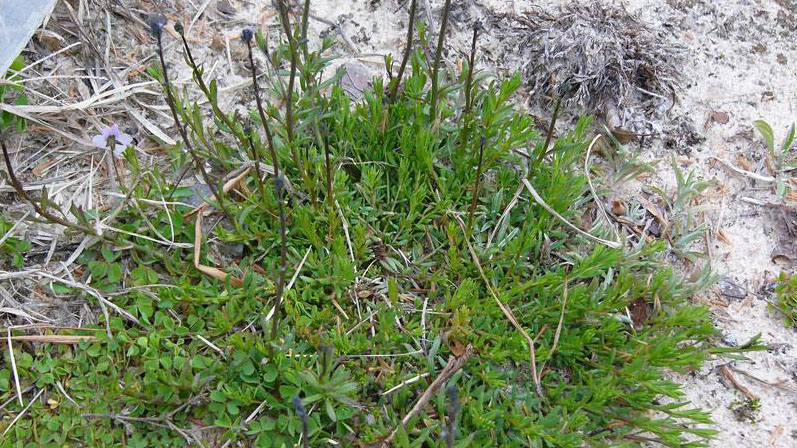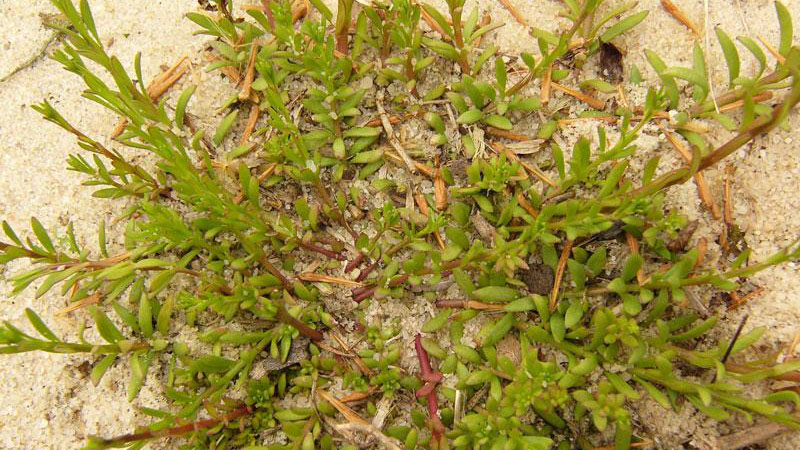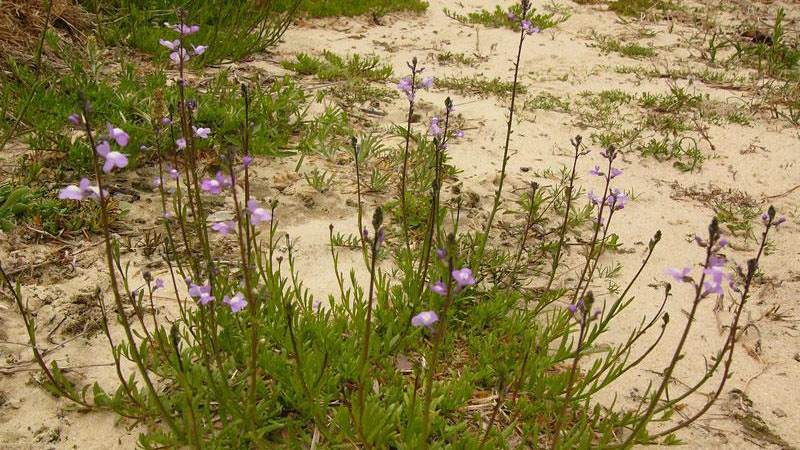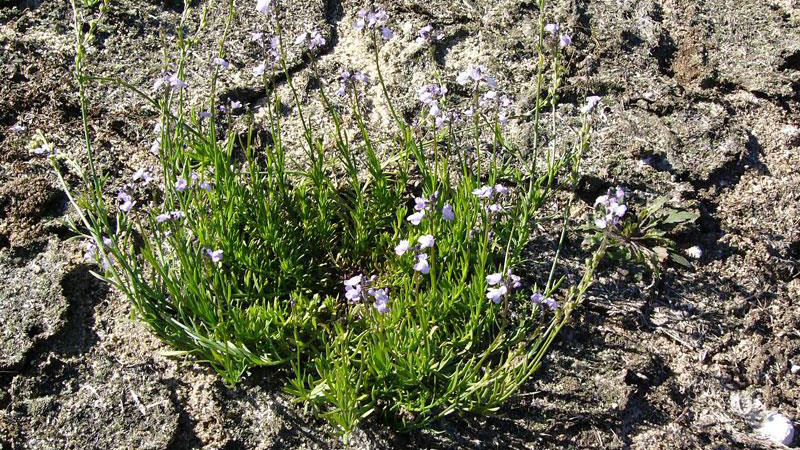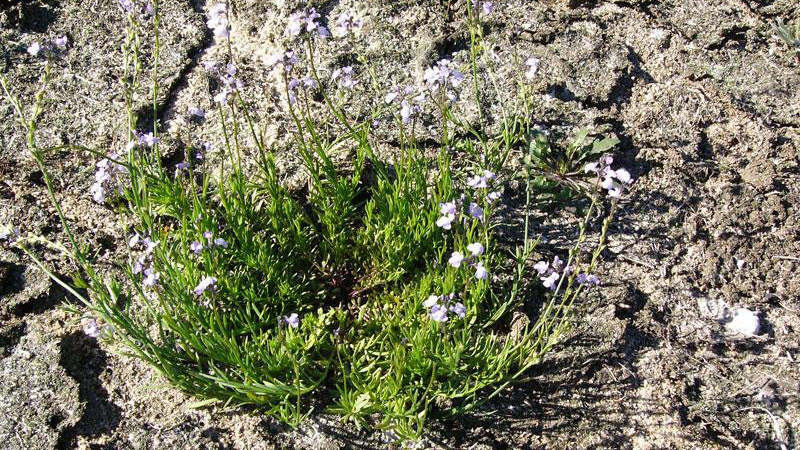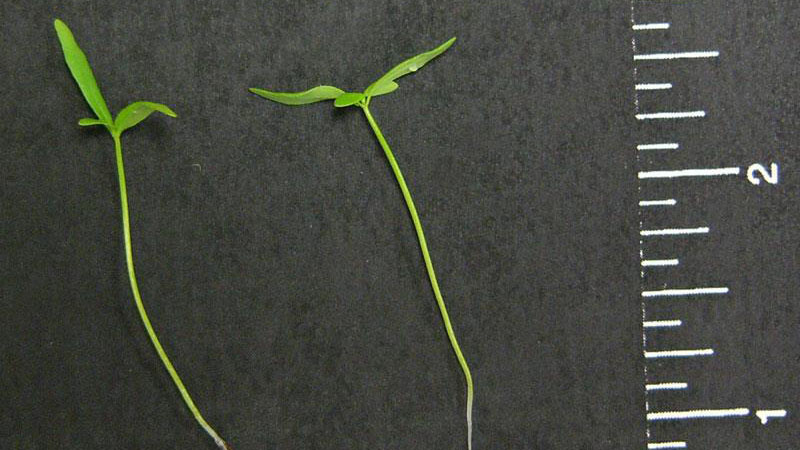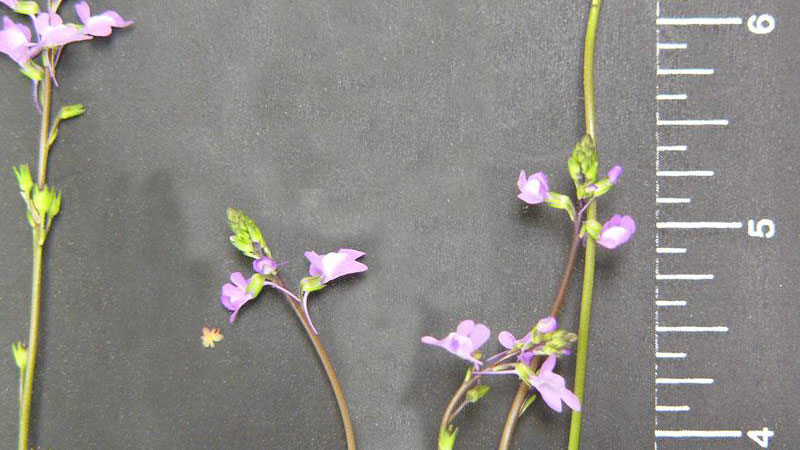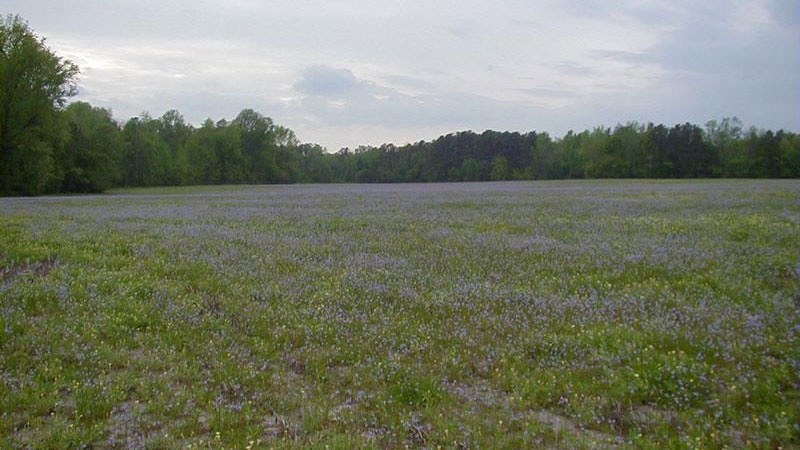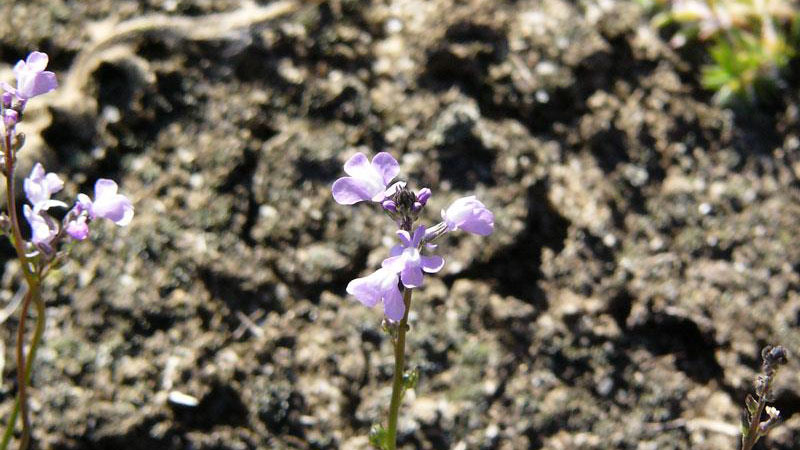Description
Oldfield toadflax (Nuttallanthus canadensis) is also known as common or blue toadflax. It is a winter annual or biennial weed that is commonly found blooming in the spring in fields and roadsides. Oldfield toadflax is most often found in the Piedmont and Coastal Plain of North Carolina. The plant can flower from early spring (most common) to late fall (less common) - depending on growing conditions. The small blue flowers have three lobes and basal spurs. The leaves are small, bright green and linear. Small clumps of leaves will form in early spring, and the blue flowers will appear on long green stems shortly thereafter.
Cultural Control
Proper turf management is important for biennial broadleaf weed control. Maintain a dense, actively growing turf through proper mowing, fertilizing, and watering practices. Mow at the proper height for your selected adapted turfgrass. Coring and traffic control reduce compaction and encourage desirable turfgrass competition. It is best to control this biennial broadleaf weed in spring or fall, if actively growing at these times.
Species Data
- GROWTH SEASON / LIFE CYCLE
- winter annual weed or biennial weed
- GROWTH HABIT
- LEAFLET NUMBER
- one
- LEAF MARGIN
- smooth
- LEAF HAIRS
- none
- LEAF / LEAFLET SHAPE
- linear / oblong
- LEAF WIDTH
- <1/2 inch
Figure 7
- <1/2 inch
- LEAF ARRANGEMENT
- alternate
- FLOWER COLOR
Publication date: Nov. 27, 2017
N.C. Cooperative Extension prohibits discrimination and harassment regardless of age, color, disability, family and marital status, gender identity, national origin, political beliefs, race, religion, sex (including pregnancy), sexual orientation and veteran status.

